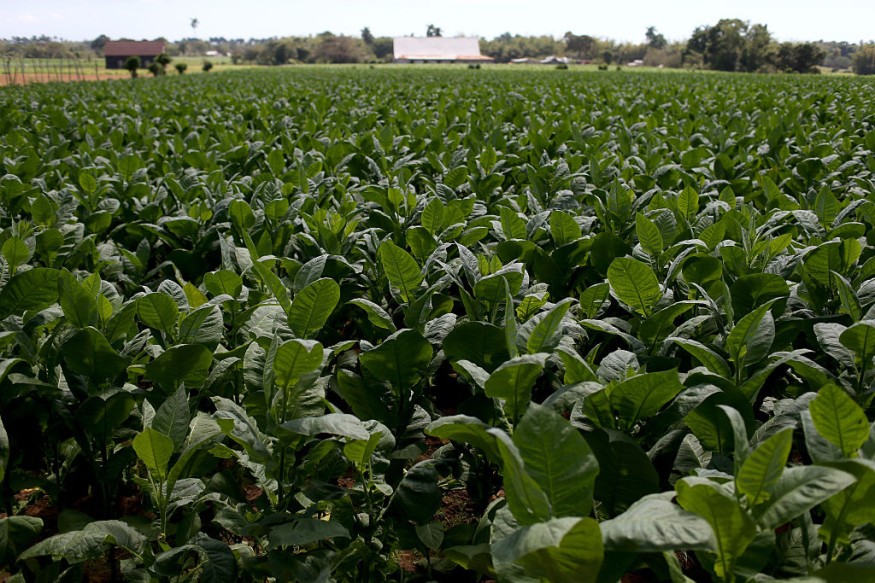
Some plants may look harmless but they can be deceiving and are actually potential killers of man since the beginning of time. While vegetation significantly sustains life, many poisonous plants are "seemingly innocuous" and may be good in hiding their toxic qualities.
Some of the most infamous plants in the macabre list were identified in Britannica.
Top 7 Most Poisonous Plants
7. Water Hemlock (Cicuta maculata)
Water hemlock is poison "hemlock" that killed the ancient Greek philosopher Socrates. It is a large wildflower in the carrot family which resembles Queen Anne's lace and is sometimes confused with edible parsnips or celery. Ethnobotanist H.D. Harrington once wrote that Water hemlock "has gained the reputation as being the most poisonous plant in the North Temperate Zone," according to US Forest Service. 60 minutes after ingestion, its toxin called cicutoxin can cause delirium, nausea, convulsions, abdominal pain, seizures, and vomiting.
6. Deadly Nightshade (Atropa belladonna)
Belladonna or the deadly nightshade also has its tale in ancient history, used by Macbeth's soldiers to poison invading Danes with wine made from the sweet fruit, about the size of cherries. Its sweetness often lures people to consume the lethal plant which causes paralysis in the body's involuntary muscles, heart, and may even cause skin irritation when touched.
5. White Snakeroot (Ageratina altissima)
The innocuous plant caused the death of Nancy Hanks, Abraham Lincoln's mother. Also called white sanicle, the poisonous North American herb with flat-topped clusters of small white flowers contains a toxic alcohol known as trematol. Livostock such as cow and cattle allowed to pasture on the plant may suffer muscular tremors, weakness, constipation, and death. When milk of affected cows is drunk by humans, he may experience milk sickness, a condition that is marked by weakness, vomiting, and constipation and can be deadly.
Milk sickness was also responsible for the deaths of thousands of settlers in the American Midwest in the early 19th century.
4. Castor Bean (Ricinus communis)
The ornament native to Africa is a source of castor oil, but naturally contains the poison ricin. Even small amount (one or two seeds) is enough to kill a child, and up to eight seeds to kill adults. Ricin attacks the cells and can cause severe vomiting, diarrhea, seizures, and even death.
The poison was used in 1978 assassination of Georgi Markov, a journalist who spoke out against the Bulgarian government, and has been mailed to several U.S. politicians in attempt to terrorist.
3. Rosary Pea (Abrus precatorius)
Native to tropical areas and often used in jewelry and prayer rosaries, Rosary peas or "jequirity beans" contain an extremely deadly protein in the seeds called abrin. While the seed itself is not poisonous if intact, it can be very lethal when scratched, broken, or chewed. Abrin prevents protein synthesis within cells and can cause organ failure within four days.
2. Oleander (Nerium oleander)
Pliny, the Elder in Ancient Rome, described the common oleander as a beautiful plant known for its striking flowers. The plant is commonly grown as a hedge and ornamental, and poisonous in all parts. If eaten, oleander can cause vomiting, diarrhea, erratic pulse, seizures, coma, and death. When in contact with the leaves and sap, the plant is known to be a skin irritant to some.
1.Tobacco (Nicotiana tabacum)
As a world-known commercial non-food plant and even widely consumed, tobacco can be both psychoactive and addictive. All parts of the plant contain the toxic alkaloids nicotine and anabasine that can kill a person when eaten.
Tobacco use causes more than 5 million deaths every year, making it the most deadly plant in the world.
Also read : Remains of 66 Individuals Uncovered from Avar Reveal Descendants of a Central Asian Culture Migration
Why are Some Plants Deadly?
According to Mega Interesting, these plants "have had to adapt to a host of climatic, earthly and environmental changes." As a result, some have developed a unique type of toxicity to accommodate the urgent need to defend oneself, like a form of self-defense in humans.
It can be noted that the toxins of these herbs are not actually aggressive to all species, as far as evolution is concerned. Some only affect certain animals, while others affect both animals and humans. Some are already poisonous during certain stages of their life, while some are not.
"Vegetation is enigmatic and mysterious," the author wrote. The most dangerous and deadly species can be hidden behind a beautiful and delicate flower, and on the other hand, some of its parts can be miraculous, the key component to survival."
© 2025 NatureWorldNews.com All rights reserved. Do not reproduce without permission.





